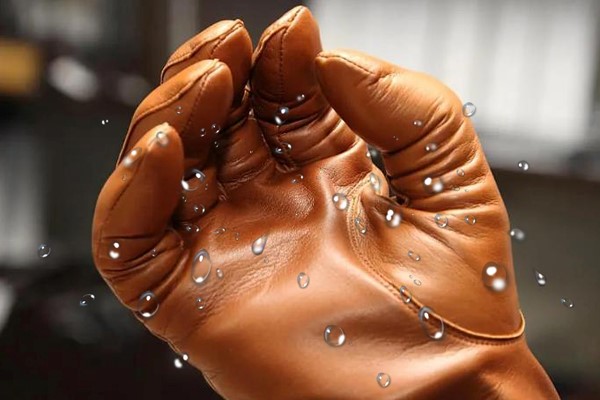In our daily life, the most commonly observed effects when leather gets wet include:
Increased Brittleness of Leather
Peeling of Leather
Visual Staining of Leather
Misshapen Leather Articles
Mold and Mildew Formation
Rotting Leather
How Does Water Interact With Leather? First, the water does not interact with leather on a chemical level. However, that is not to say that the properties of your leather gloves are unchangeable with prolonged or consistent water exposure. In short, water can permeate the leather’s surface, drawing out natural oils within the material, leading to undesirable effects.
Leather essentially originates from the skin and hides of animals. As a result, leather can be considered a material that has an element of breathability. This is due to the porous nature of animal skins commonly used in the leather making; largely due to hair follicle pores.
This means that water on leather likely doesn’t fully stay on leather. It can seep in beyond the surface, leading to undesirable effects down the line. The main function of sebum is to coat, protect and moisturize the skin. Prolonged water exposure can lead to the natural sebum found within leather dissipating at a much quicker rate than we would otherwise expect.
Effects Of Water On Leather
When leather gets wet, it becomes brittle, starts to peel, can lead to visual stains, may start to misshape, promote mold and mildew formation, and even start to rot. Let’s take a closer look at all of these effects in detail.
Effect 1: Increased Brittleness Of Leather
As previously mentioned, a piece of leather that loses its natural oils will be naturally more brittle. The internal oils act as a lubricant, allowing for the leather to be bendable as well as supple to the touch.
The presence and exposure of water can lead to evaporation and drainage (via osmosis) of the internal oils. In absence of the lubricating agent, there will be greater friction among and between the fibers of the leather when the leather moves. The fibers rub against each other and there is also greater potential for wear and tear down the line. In extreme circumstances, cracking on leather surfaces can be observed as well.
Effect 2: Peeling Of Leather
The effects of peeling from water damage are most commonly associated with goods that are made of bonded leather. In short, bonded leather is made by combining leather scraps, sometimes even with fake leather.
Therefore, when using leather gloves in our daily work, we should try to avoid contact with water, or dry them as soon as possible after contact with water to ensure the long-term normal use of leather work gloves.
Post time: Nov-03-2023
